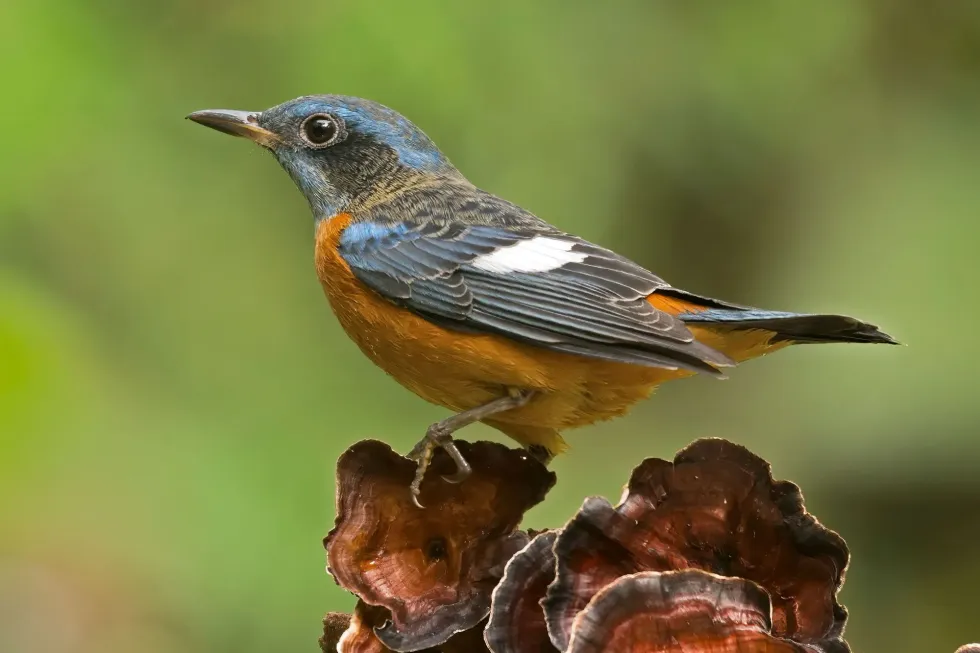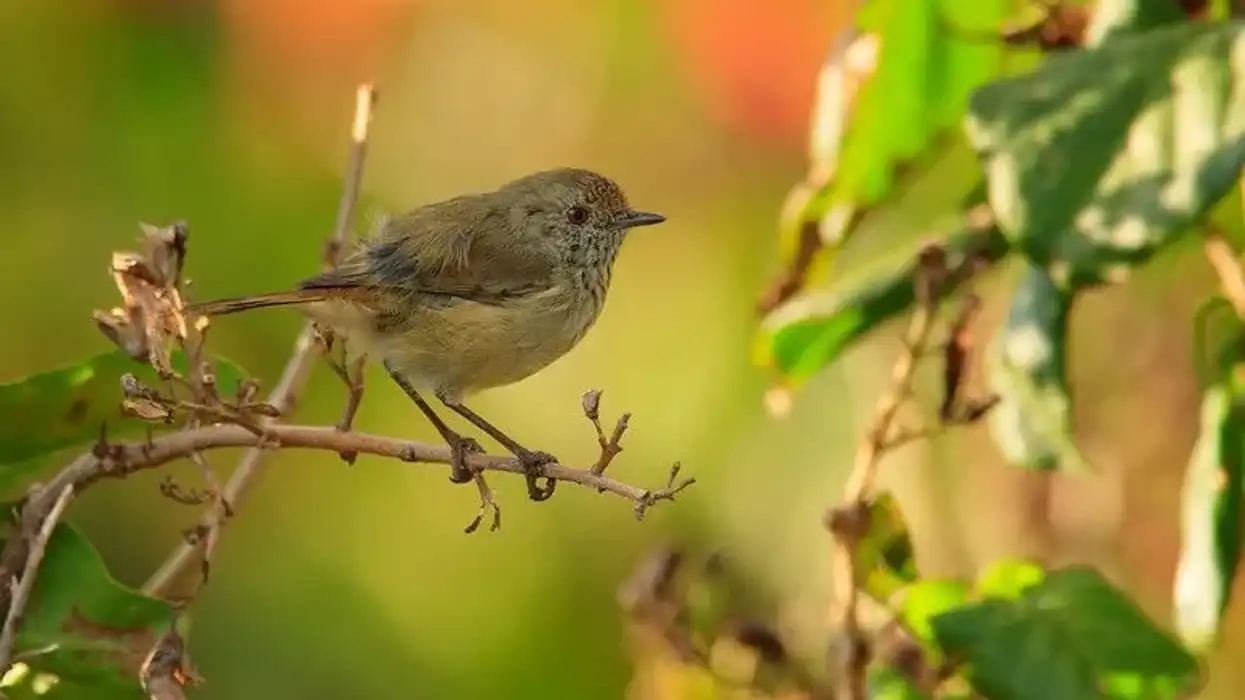The blue-capped rock thrush (Monticola cinclorhynchus) breeds in hilly and montane habitats, especially open dry woods and rocky slopes with scattered trees. It is usually found in dense canopied forests.
In the winter, it descends; it prefers secondary woods and plantations. Forages in trees and on the ground, and frequently look for prey among snags or telephone lines.
In the winter, it travels in mixed-species flocks. The blue-capped rock thrush (Monticola cinclorhynchus) is a chat species that nests in the Himalayan foothills and spends the winter in southern India's forests.
They are most often seen in Nandi Hills, although they may also be found in Ramanagram and other wooded regions surrounding Bengaluru. When disturbed, the blue-capped rock thrush (Monticola cinclorhynchus) will fly up into an upper tree and sit still.
You might also be interested in reading about the song thrush and wood thrush.
Blue-Capped Rock Thrush Interesting Facts
What type of animal is a blue-capped rock thrush?
A blue capped rock thrush (Monticola cinclorhyncha) is a bird species belonging to Muscicapidae family, genus Monticola.
What class of animal does a blue-capped rock thrush belong to?
The genus Monticola of the blue-capped rock thrush (Monticola cinclorhyncha) bird belongs to the Aves family of birds. It is a member of the Muscicapidae family and the Chordata phylum.
How many blue-capped rock thrushes are there in the world?
The blue-capped rock thrush (Monticola cinclorhyncha) species' worldwide population number has not been measured, although the bird is said to be quite abundant in northern Pakistan and widespread across the Himalayas.
Where does a blue-capped rock thrush live?
The blue-capped rock thrush (Monticola cinclorhyncha) bird lives in terrestrial tropical and subtropical dry forests, shrublands, mountainous forests, agricultural lands, grasslands, pasturelands, and so on. It is a summer visitor in parts of Afghanistan. It is also found along the Himalayas from Pakistan to Arunachal Pradesh in summer.
What is a blue-capped rock thrush's habitat?
When startled, the blue-capped rock thrush (Monticola cinclorhynchus) bird flies up into trees and sits motionless, similar to thrushes. It spends the summer in portions of Afghanistan and along the Himalayas from Pakistan to Arunachal Pradesh.
In the summer, it is found in pine forests and hill slopes. In winter, it is found in densely forested areas. During winter, it is found in Bangladesh as a passage migrant and in parts of India and Myanmar.
Who do blue-capped rock thrushes live with?
Monticola is derived from the Latin mons, montis, which means mountain, and colere, which means to live, and the specific epithet solitarius means solitary. In the winter, it travels in mixed-species flocks.
How long does a blue-capped rock thrush live?
A blue-capped rock thrush (Monticola cinclorhynchus) has a life expectancy of 5-10 years.
How do they reproduce?
The blue-capped rock thrush (Monticola cinclorhynchus) breeds in the foothills from April to August. The blue-capped rock thrush (Monticola cinclorhynchus) species' nest is a loose cup of moss, stems, and leaves, put on or near the ground, often underexposed tree roots, in a hole in a steep bank, or in a rock crevice.
They deposit three to four eggs in a clutch.
The young blue-capped rock thrush (Monticola cinclorhynchus) fledges after around 16 days and may be fed by its parents for another two weeks. It winters in the hill forests of the southern Indian subcontinent.
What is their conservation status?
The blue-capped rock thrush (Monticola cinclorhynchus) is listed under the Least Concern category.
Blue-Capped Rock Thrush Fun Facts
What do blue-capped rock thrushes look like?
The male blue-capped rock thrush (Monticola cinclorhynchus), with its brilliant blue and black upperparts and a conspicuous white wing patch, stands out. The male species bottom has a dark brown color.
In comparison, the female species is dark brown and fairly simple. The blue-capped rock thrush (Monticola cinclorhynchus) male has a vivid mid-blue head with a black patch from the lores through the ear-coverts, a black mantle, and blue-fringed wings, with mid-blue lesser coverts and white bases of secondaries.
The underparts are rusty-orange, and this coloration extends to the lower back and rump. The tail is black with a blue tint to it.

How cute are they?
The spectrum of cuteness in the avian world is quite astounding, from the delicate canyon wren to the plump royal penguin. Of course, each species of bird has its own distinct beauty, and lists like this are produced more for entertainment than anything else.
The male blue-capped rock thrush (Monticola cinclorhyncha) stands out because of its bright blue and black upperparts and prominent white wing patch.
How do they communicate?
The blue-capped rock thrush (Monticola cinclorhynchus) species' short, gentle whistles serve as the alarm call. Frequently two notes in sequence, the second one higher 'pjuu-eee', and occasionally followed by a series of dry 'check' noises. The song is a lovely, melodic fluting. Both sexes sing although men sing more vigorously.
How big is a blue-capped rock thrush?
These species are 6.3-7.5 in (16–19 cm) long with a wingspan of 13-14.5 in (33-36.8 cm).
How fast can a blue-capped rock thrush fly?
These species are stationary, however, a tiny number of them migrate from their breeding sites each year, only at night in small groups of up to five birds. Although their exact speed is not known. Just like other thrushes, they fly to hide in the trees.
How much does a blue-capped rock thrush weigh?
The species' weight ranges in 0.06-0.09 lb (27.2–40.8 g).
What are the male and female names of the species?
There is no different species name for the male and female birds.
What would you call a baby blue-capped rock thrush?
Young birds are often called chicks.
What do they eat?
Insects, snails, worms, tiny lizards and frogs, berries, and seeds are among this bird species' favorite foods. The bird forages by scanning from tree limb to tree limb and descending to the ground.
It also hunts for food in trees and is mostly arboreal, seeking on trunks and branches. It turns over leaf litter with its bill on the ground and occasionally sallies for flying insects. During the winter, this bird can be seen in small groups and will often join mixed-species foraging flocks.
Are they dangerous?
No, this bird species is not dangerous.
Would they make a good pet?
Birds make perfect first pets since they can be easily integrated into homes with children and teach children the responsibilities that come with owning an animal. When properly cared for and nourished, birds outlive many other pets.
Did you know...
Birds such as the blue-capped rock thrush (Monticola cinclorhyncha), the Blue-throated blue flycatcher, the Kashmiri flycatcher, the greenish warbler, the Indian blue robin, and the common rosefinch have been sighted in the woods around Coimbatore and the Nilgiri Biosphere Reserve in India. These winged guests arrive in January when their migration is at its peak.
The migration of birds from the Himalayan area begins with the arrival of winter.
Winter's lack of food causes insects, flies, and small seeds to migrate south, particularly to the Western Ghats. In March and April, they fly back to their natural environment, a process known as Spring Migration.
How many eggs do blue-capped rock thrush lay?
They deposit three to four eggs in a clutch. During the mating season, the female will build a cup-shaped nest from dried grasses under a rocky overhang or in a crack or fissure.
Breeding occurs at various periods depending on geographical location, but primarily between the months of April and July. Typically, one brood is produced in the bird's northern area, but in the more southern parts, two or even three clutches may be deposited yearly.
How to spot blue-capped rock thrush
With his black mask, sky-blue head, orange rump, and underparts, this brightly colored male is distinctive. The female has gray-brown underparts that are scaled. It is similar to the bigger female chestnut-bellied rock-thrush, but it lacks the white ear crescents, has less patterned underparts, and is lighter overall.
Here at Kidadl, we have carefully created lots of interesting family-friendly animal facts for everyone to discover! For more relatable content, check out these fox sparrow facts and ostrich facts for kids.
You can even occupy yourself at home by coloring in one of our free printable blue-capped rock thrush coloring pages.
Second image by Suman Kumar R.










